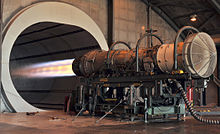is a type of aerostat or "lighter-than-air aircraft" that can be steered and propelled through the air using rudders and propellers or other thrust mechanisms. Unlike aerodynamic aircraft such as fixed-wing aircraft andhelicopters, which produce lift by moving a wing through the air, aerostatic aircraft stay aloft by having a large "envelope" filled with a gas which is less dense than the surrounding atmosphere. The first lifting gas used was hydrogen, although this had well-known concerns over its flammability. Helium was rare in most parts of the world, but large amounts were discovered in the USA. This meant that this non-flammable gas was rarely used for airships outside of the USA. All modern airships, since the 1960s, use helium.
The main types of airship are non-rigid (or blimps), semi-rigid and rigid. Blimps are "pressure" airships where internal pressure, maintained by forcing air into an internal ballonet, is used to both maintain the shape of the airship and its structural integrity. Semi-rigid airships maintain the envelope shape by internal pressure, but have some form of internal support such as a fixed keel to which control and engine gondolas and stabilizers and steering surfaces are mounted. Rigid airships have a structural framework which maintain the shape and carries all loads such as from gondolas, engines. The framework contains numerous balloons, known as "gas cells" or "gasbags" which supply the static lift without having to bear any structural loading. Rigid airships are often called Zeppelins, as the type was invented by Count Zeppelin and the vast majority of rigid airships built were manufactured by the firm he founded.

is an aircraft that has a maximum gross take-off weight of 12,500 lb (5,670 kg) or less.
Many light aircraft are used commercially for passenger and freight transport, sightseeing, photography and other similar roles as well.
Examples of light aircraft include:
Cessna, the entire range of propeller driven aircraft from the Cessna 120 up to the Cessna Caravan
Piper, all models
Beechcraft, the light models
Others like Cirrus aircraft; GA8 Airvan; Aviat Husky and the Robin DR400.
Examples of aircraft that are at the maximum gross take-off weight for this category include the de Havilland Canada DHC-6 Twin Otter and Beechcraft B200 Super King Air.
is any fixed-wing or rotary-wing aircraft that is operated by a legal or insurrectionary armed service of any type. Military aircraft can be either combat or non-combat:
1- Combat aircraft are aircraft designed to destroy enemy equipment using their own armament. Combat aircraft are normally developed and procured only by military forces. 1.1 Fighter
1.2 Bomber
1.3 Attack aircraft
1.4 Electronic warfare aircraft
1.5 Maritime patrol aircraft
1.6 Multirole combat aircraft
2- Non-combat aircraft are aircraft not designed for combat as their primary function, but may carry weapons for self-defense. These mainly operate in support roles, and may be developed by either military forces or civilian organizations.2.1 Military transport aircraft
2.2 Airborne early warning and control
2.3 Reconnaissance and surveillance aircraft
2.4 Experimental Aircraft
is one of two major categories of flying, representing all non-military aviation, both private and commercial. Most of the countries in the world are members of the International Civil Aviation Organization (ICAO) and work together to establish common standards and recommended practices for civil aviation through that agency.
Civil aviation includes two major categories:
1-Scheduled air transport, including all passenger and cargo flights operating on regularly scheduled routes;
2-General aviation (GA), including all other civil flights, private or commercial
Although scheduled air transport is the larger operation in terms of passenger numbers, GA is larger in the number of flights (and flight hours, in the U.S.) In the U.S., GA carries 166 million passengers each year, more than any individual airline, though less than all the airlines combined.
Some countries also make a regulatory distinction based on whether aircraft are flown for hire like:
1-Commercial aviation includes most or all flying done for hire, particularly scheduled service on airlines.
2-Private aviation includes pilots flying for their own purposes (recreation, business meetings, etc.) without receiving any kind of remuneration.
All scheduled air transport is commercial, but general aviation can be either commercial or private. Normally, the pilot, aircraft, and operator must all be authorized to perform commercial operations through separate commercial licensing, registration, and operation certificates..









